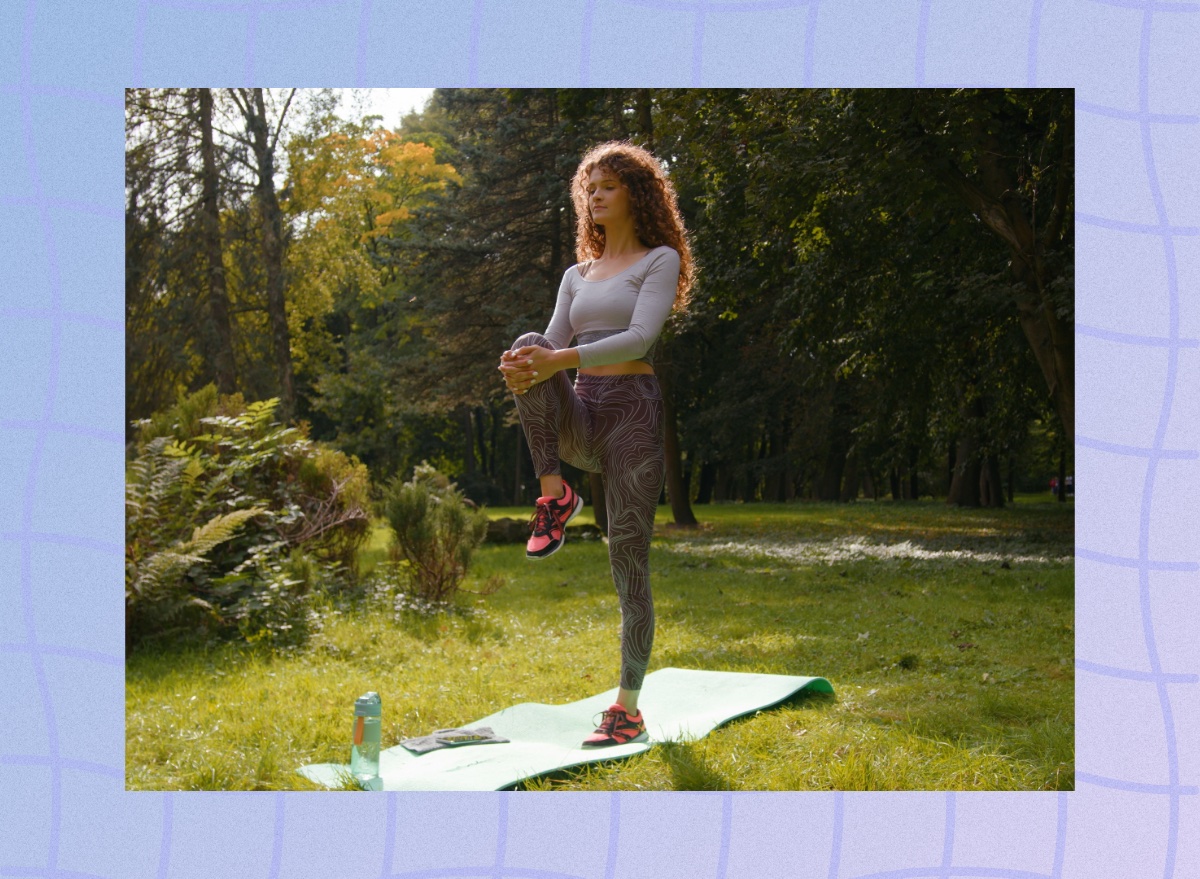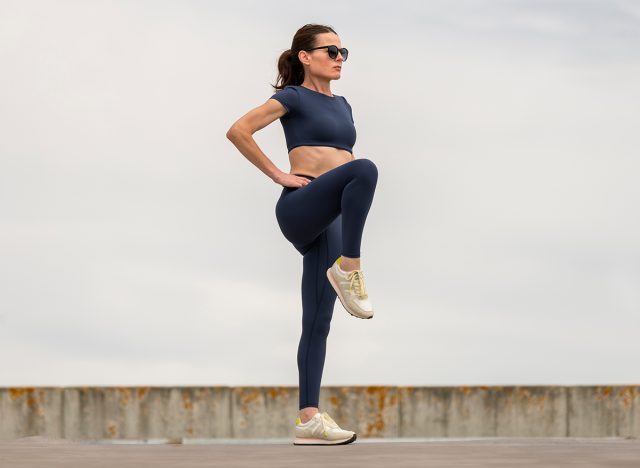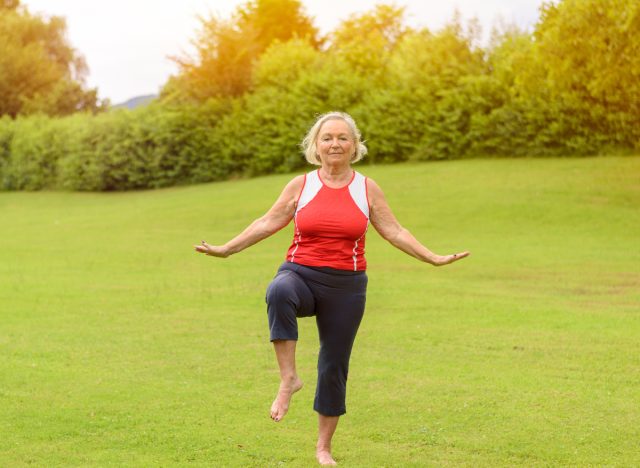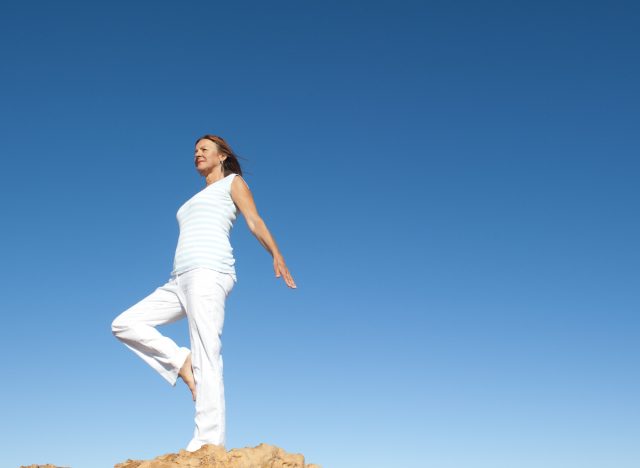This Quick Stability Test Reveals How Balanced You Really Are

Balance and stability may not top your list of fitness priorities—but they absolutely should. Strong balance is linked to better mobility, greater independence, fewer falls, and even a longer lifespan. We learned a quick balance test that’s both trainer-approved and science-backed—and it’s an excellent way to see how stable you truly are.
Try the Single-Leg Stand With Your Eyes Closed

“A decent, low-effort way to check your balance is the single-leg stand with eyes closed,” explains Luke Jones, a certified personal trainer at HERO Movement with 10+ years of experience in helping people improve mobility and quality of movement.
According to a study published in the British Journal of Sports Medicine, being unable to balance on one leg for 10 seconds later on in life almost doubles your risk of all-cause mortality within the next 10 years. Needless to say, training is crucial.
Luke breaks down exactly how to perform a single-leg stand with your eyes closed: “Stand barefoot near a wall or chair (just in case you need support), shift your weight onto one leg, then gently close your eyes. The aim is to stay upright without grabbing support or putting your foot down. Ten to 15 seconds is a good target to aim for, and you might be surprised how tricky it is initially!”
The best part? You can do this test right at home.
What To Look for During The Stability Test

You’ll know you’re acing this stability test if you’re able to stay pretty still, maintain level hips, and avoid “windmilling” your arms.
“Wobbling, hopping, or touching down quickly doesn’t mean anything’s ‘wrong,’ per se—just that balance might be an area that could benefit from a bit of attention,” Luke explains.
Why Training Your Balance Is Essential

Training your balance and showing it regular TLC is key, especially since it quietly declines with age.
“Most people don’t notice until it starts to impact their confidence in daily movement. It’s not just about preventing falls—it’s about feeling steady and at home in your body,” says Luke.
Poor balance can result in falls or injury because the body isn’t as in control or aligned as you may think it is.
“Early signs might be feeling a bit unsteady on one leg, avoiding narrow or unstable surfaces, or finding yourself needing to ‘catch’ your step more often than usual,” Luke explains. “Again, nothing to panic about, but worth working on. Basic resistance exercises like squats and deadlifts can help, as can simply practising standing on one leg throughout the day.”
You can also train your balance by walking on uneven surfaces, picking things up from the ground, and carrying a heavy grocery bag on one side.
“The same goes for anything athletic: lifting, running, jumping, dancing, grappling, striking, yoga… When balance is off, we tend to compensate and potentially adopt less efficient movement patterns. It can also knock your confidence,” Luke adds.